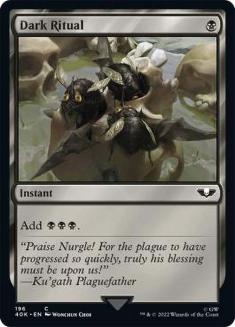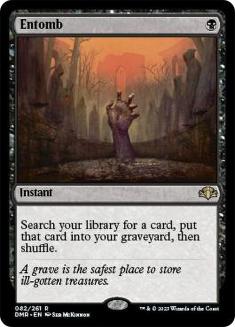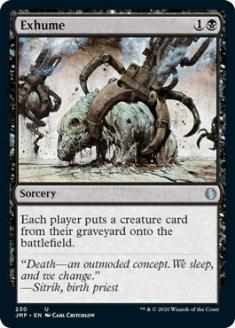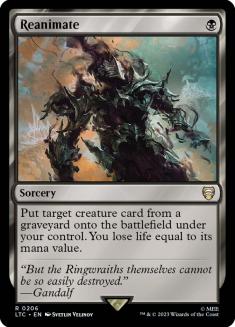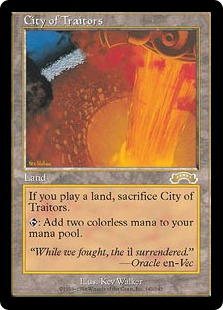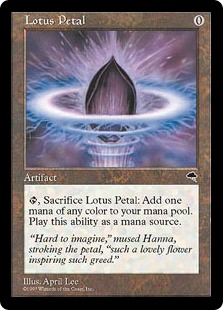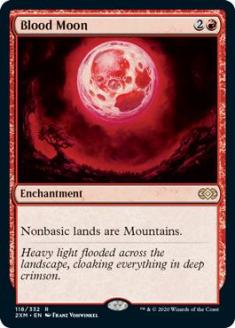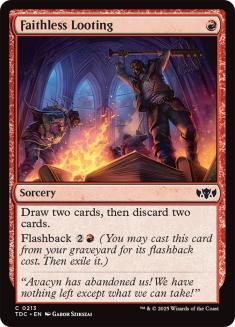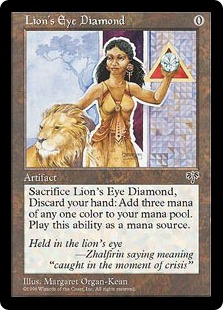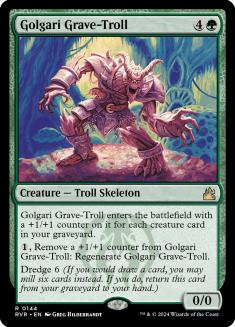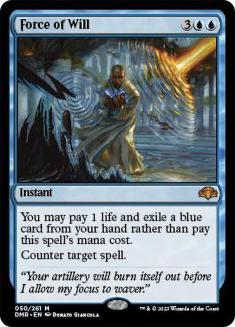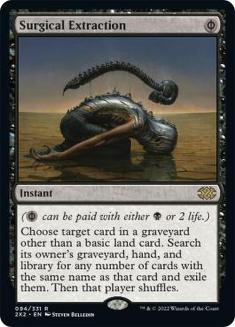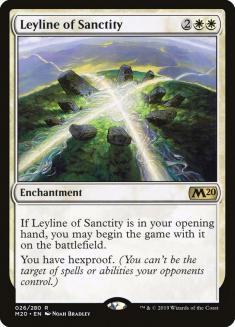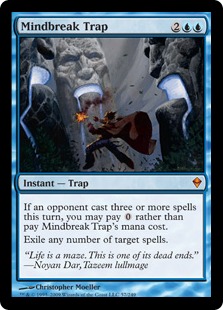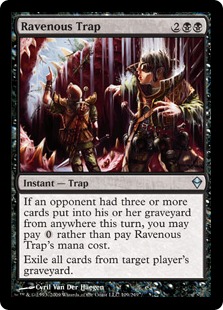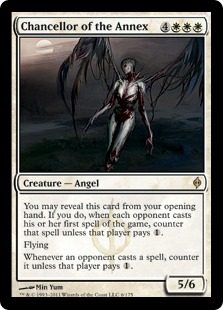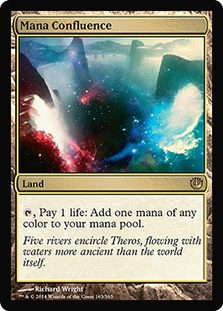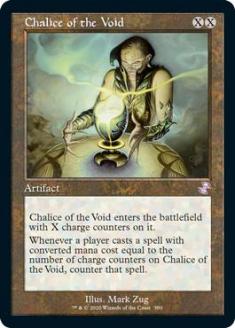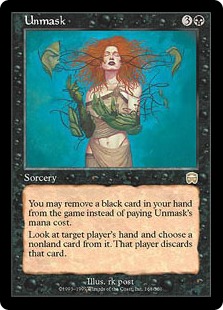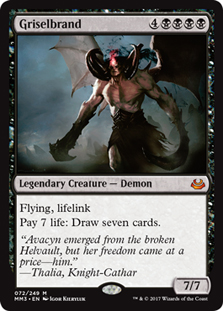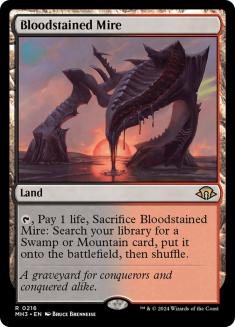Change is on the horizon.
Last Thursday, there was an announcement involving a change to the mulligan rules that’s going to be tested at the upcoming Mythic Championship in London. To get anybody up to speed that may not have seen it yet:
03.4. Each player draws a number of cards equal to their starting hand size, which is normally seven. (Some effects can modify a player’s starting hand size.) A player who is dissatisfied with their initial hand may take a mulligan. First, the starting player declares whether they will take a mulligan. Then each other player in turn order does the same. Once each player has made a declaration, all players who decided to take mulligans do so at the same time. To take a mulligan, a player shuffles the cards in their hand back into their library, draws a new hand of cards equal to their starting hand size, then puts a number of those cards onto the bottom of their library in any order equal to the number of times that player has taken a mulligan. Once a player chooses not to take a mulligan, the remaining cards become the player’s opening hand, and that player may not take any further mulligans. This process is then repeated until no player takes a mulligan. A player can’t take a number of mulligans greater their starting hand size.
That’s… a lot.
Immediately, there were takes all over the internet. Everything from “Who cares?” up to “The sky is falling, Magic is dying.” Even Patrick Sullivan found some time to weigh in. The common consensus is that it doesn’t tend to have an enormous effect on lower-powered formats. Things that are restricted to doing “fair” Magic things, like Standard and Sealed, are going to care more about the lowered quantity of cards they have access to in a game than they’re going to care about having the increased ability to sculpt their draws during the pre-game.
.related_text {
padding:0px 10px;
height:50px;
line-height:2em;
}
.related_text img.related_author {
width:48px;
height:48px;
float:left;
padding:0px 15px;
}
.related_text .title {
color:#333;
font-style:italic;
font-size:100%;
}
.related_text a:link {
font-weight:bold;
color:#005586;
padding-bottom:0px;
font-style:normal;
}
.related_text .header {
text-transform: uppercase;
padding-top:0px;
font-weight:bold;
}
.related-premium {
color:#CD9100;
}
.related-select {
color:#125687
}
This isn’t true in older formats. As the pool of legal cards expands, the power of the available synergies increases at an absurd rate. With the Open at #SCGNY being Legacy, it begs the question: what effect would this mulligan rule end up having on the Legacy format?
Strategies That Benefit from the London Mulligan Rule
The knee-jerk reaction is to think that combo decks that are looking for specific cards are going to be happy with this rule change. After all, most combo decks tend to operate on an axis that’s difficult to interact with before sideboarding, and anybody playing against them with a fair deck are relying on the combo strategy’s fail rate to a certain degree.
That being said, decks that require a critical mass of cards to do their thing are going to suffer a bit more. Sure, finding Goblin Charbelcher is going to be easier in Belcher, but that deck still demands seven mana come along with the namesake cannon in order to win the game.
Spells (47)
- 4 Land Grant
- 4 Desperate Ritual
- 4 Burning Wish
- 4 Goblin Charbelcher
- 4 Seething Song
- 4 Lotus Petal
- 4 Lion's Eye Diamond
- 4 Chrome Mox
- 4 Rite of Flame
- 3 Empty the Warrens
- 4 Pyretic Ritual
- 4 Gitaxian Probe
Sideboard

Several other combo decks all fall into this vein, Storm, High Tide, and Elves are all examples of decks in Legacy that theoretically have a series of draws that can win with a lower number of resources but are generally going to need a raw quantity of specific resources to win. Mulliganing to lower and lower numbers of cards in order to take advantage of the mulligan procedure will make it less and less likely that a busted combination of cards is drawn in one’s opening hand.
The things that are going to benefit from this the most are the decks that have game-winning combinations of two to four cards in order to win. Think of things like this:
Rakdos Reanimator is a prime example of a deck that doesn’t really care about how many cards are in its opening hand, so long as it can play a couple of cards that result in a big beefy creature on the battlefield. If you’re willing to go break the combo down into two turns, it requires even fewer cards in the opening hand:
Reanimator isn’t the only deck that can put together these kinds of starts. It’s hard to imagine that opening hands can do anything for less than three cards, as they need mana and the cards to cast with said mana, but opening hands that effectively win the game on the first turn aren’t that farfetched. What about this opening hand?
This hand might not literally put the opponent at zero life, but with the quantity of fetchland-fueled manabases and other nonbasic lands in the format, this is going to be a lights-out opening play against a surprising number of strategies.
This hand doesn’t even care about having a land. It activates the Lion’s Eye Diamond to pitch the other two cards, casts Faithless Looting from the graveyard, and is off to the races.
These aren’t the only decks that benefit from the new mulligan rule, but it illustrates the kind of deck that’s going to benefit the most from its existence: resource-light synergy decks.
The Potency of Answers
These strategies aren’t without answers. Most of these synergies involve doing things with the graveyard or having a single payoff card, and the London Mulligan rule being available on the combo player’s side means that it’s available to their opponents as well. One of the nice things about Legacy is it does have zero-mana answers to the aforementioned strategies:
Labeling the above strategies as linear isn’t too far off base, and they aren’t going to function nearly as well in the face of pre-game hate effects such as Leyline of the Void. On top of that, Force of Will is already one of the best cards in the format by virtue of its efficacy as a floodgate for checking combo. The card selection given with the mulligan is great for a player that only needs to find a single card in order to drastically reduce the power level of the opponent’s deck.
It’s not going to be as helpful in the fairer matchups, but when it comes to finding a single answer, the mulligan rule will end up being a double-edged sword for the linear decks that are looking to abuse a single axis in order to win the game.
On the other hand, the competent pilots of linear strategies are going to lean more into swerves that give them other angles of attack or have the luxury of mulliganing to cards that keep their opponent’s hate cards in check. Look at this hand, for example:
Sure, this isn’t a “Turn 1, I win.” hand, but it’s a hand that can implement its combo on the second turn, while only requiring four total cards to do it. It isn’t checking Leyline, but needing to cast a spell against this hand will frequently not be good enough.
What about fighting Leyline?
Hope you didn’t mulligan too low to find that “game-winning” Leyline of the Void. Nice hate card, dummy.
With the London Mulligan in effect, decks that relied on card advantage as we know it are going to see a dramatic decrease in popularity. Who cares how many cards you have up on your opponent if you’re dying on the first or second turn of the game?
On top of that, decks that need a bunch of resources in order to play a regular game of Magic are going to suffer as a result of this. Sure, finding specific hate cards becomes easier, but Baleful Strix-fueled strategies do need a mix of lands and spells in order to accrue an advantage and mulliganing lower than five or six becomes a very real liability, as they don’t have any sort of “I win” draw that makes mulliganing to Force of Will or Leyline of the Void a winning strategy.
All of that is to say that mulliganing to these cards may end up temporarily stymying the opponent’s development for a couple of turns, but it’s hard to imagine the fairer decks winning many games from four total cards in their opening hand, when one of those cards is simply a defensive hate card.
This whole song and dance becomes more and more common the more card selection that’s afforded to each player, but it isn’t going to come up in every matchup. Other than Force of Will, these answers tend to be fairly narrow and aren’t going to have applications against everything that can push an early “I win” button.
Whelp, so much for needing three cards.
Any of the prison strategies that lean into fast mana for the sake of early lockouts will benefit greatly from this rule, specifically because their entire strategy is trying to create a game state that is fundamentally difficult to interact with.
This is ironically going to create a dynamic in which the blistering fast combo decks may be good for a week or two, but once sideboards adjust to accommodate for the graveyard decks and the decks that need to resolve several spells in order to win, things will change. The decks that can’t be easily interacted with via early spells, and then shut off the combo decks, while also hurting enough of the fair deck’s staples, will rise to the top.
“But Carmen, the prison decks don’t have ways of interacting before the first turn! Aren’t they going to lose to the aforementioned strategies?”
Before sideboarding, sure. Both Mono-Red Prison and flavors of Colorless Eldrazi all have tools in the sideboard to interact with graveyards and copious amounts of spells for zero mana (as mentioned above), and pre-sideboard, they have something else on their side that brings up the next point:
Emphasis on Play/Draw
Whenever players roll a die, flip a coin, or do whatever else they do in order to determine who’s on the play and who’s on the draw, it’s almost always two players who are interested in being on the play. This is because Magic has evolved in such a way over the years that emphasis has been placed on development over card advantage. The London Mulligan rule does nothing but exacerbate the advantage of going first.
Remember the two-card hand from earlier? Imagine you’re playing Rakdos Reanimator, your opponent mulligans to two on the play, leads on Tomb-Chalice, and you’re staring at this hand:
In spite of having a first-turn combo (with Unmask for disruption), this hand just isn’t remotely good enough.
With the London Mulligan rewarding these styles of all-in combo decks and raising their metagame shares, the number of games effectively decided by the die roll will skyrocket.
This is the core issue with the mulligan rule in Legacy. While it may help limit the number of games that one player has a totally non-functioning draw, having one player Chalice of the Void or Blood Moon their opponent is just a different flavor of one person not being able to play the game of Magic.
***
At this point, I’m optimistic that the rule won’t make it out of the Mythic Championship weekend, or there will simply be different sets of mulligan rules based on the format. Legacy is for fairly entrenched players and having the more classic mulligan of today doesn’t seem particularly difficult to establish.
Regardless, this change in rules will dynamically alter the way that people choose their decks for tournaments, and undoubtedly ripple into the rest of the format as a whole. If it looks like the rule will make its way into Legacy, be sure to pick up your fast mana as soon as possible. These cards aren’t getting any easier to find and they’ll be more necessary than ever.



